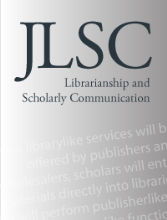Academic Publishing Today
SO MANY ARTICLES
3,344,037: Total number of articles published worldwide in 2022
(National Science Board / National Science Foundation, 2023)
46%: Articles published open access worldwide in 2022
"Overall, the proportion of global open articles published has increased over the last eight years, from 21% in 2014 to 46% in 2022." (Brayman et al., 2024, p. 31)
Market Consolidation: Most papers published by very few commercial publishers
A 2015 study by Larivière et al. (pp. 3-5) observed the consolidated state of academic publishing:
- Elsevier, Taylor & Francis, Wiley-Blackwell were responsible for publishing 41% of all papers in the Social Sciences and Humanities in 2013
- Elsevier, Wiley-Blackwell, Springer Nature were responsible for publishing 47% of all papers in Natural and Medical Sciences in 2013
Elsevier (owned by the RELX Group) holds steady as the world's most profitable academic publisher (Milliot, Publishers Weekly, 2023).
Issues
The scientific article has essentially become the only way science is systematically represented in the world. … If you control access to the scientific literature, it is, to all intents and purposes, like controlling science. (Buranyi, 2017)
- The effects of for-profit publishing combined with the researcher need to "publish or perish" in high-impact journals:
- Emphasis on writing and publishing attention-grabbing research with positive results, no attention paid to quotidian and negative results, despite the value that research may hold
- Pressure to publish creates a market for fast, fraudulent citations
- Monopoly on published research: “one article cannot substitute for another” (Buranyi, The Guardian, 2017)
- More articles published leads to a greater rate of article retractions: More than 10,000 articles retracted in 2023 (Van Noorden, Nature, 2023)
- Prohibitive access costs to journals and articles lead to greater piracy of academic research, both domestically and internationally (Karaganis, 2018)




